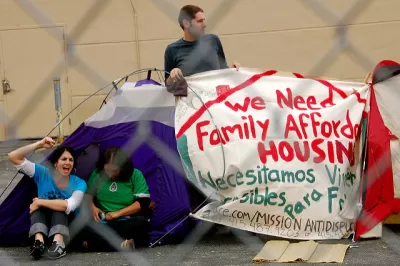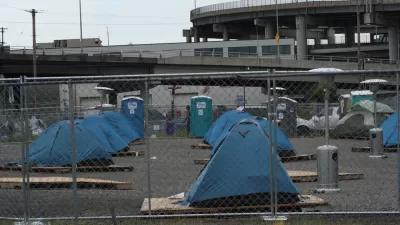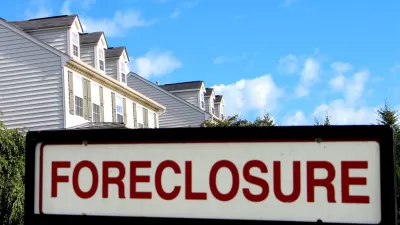The pre-existing condition of the California housing market will make it very difficult to meet the demands of the state's residents as unemployment spikes in the state.

Liam Dillon, Ben Poston, and Julia Barajas and report on the state of the affordable housing development industry in California, where a recent multi-family development in Solano Beach recently became the most expensive affordable housing project in the state, and likely the country.
When developer Ginger Hitzke first proposed an affordable housing complex on a parking lot in Solana Beach, she envisioned building 18 new homes for low-income families and adults at a cost of $414,000 per apartment.
More than a decade later, her project has shrunk in size by nearly half and become more than twice as expensive.
According to the article, the price of the project serves of evidence of the state's broken housing development market.
It’s not just the notoriously high price of land or the rising cost of construction materials that explain why it’s so expensive to build affordable housing in California, The Times found. Numerous factors under state and local government control also are to blame, including opposition from neighbors and rules that compel developers to meet labor and environmental standards that often exceed what’s required for luxury condominiums.
While affordable housing was a crisis before the coronavirus started spreading throughout the state, sudden unemployment (2.7 million in California have filed for unemployment, according to California Governor Gavin Newsom on April 15), and other economic stresses are likely to make the need for affordable housing all the more pressing.
An earlier article by Dillon cited experts opinion on the likelihood for economic effects of the pandemic to increase demand for affordable housing. Although the focus of that prediction would seem inconsistent from a prediction by experts at the Joint Center for Housing Studies of Harvard University that the pandemic would reduce demand for rental housing, both predictions share the same express concern about the potential for the coronavirus-related housing crisis to worsen housing affordability for low-income renters.
FULL STORY: Affordable housing can cost $1 million per apartment in California. Coronavirus could make it worse

Planetizen Federal Action Tracker
A weekly monitor of how Trump’s orders and actions are impacting planners and planning in America.

San Francisco's School District Spent $105M To Build Affordable Housing for Teachers — And That's Just the Beginning
SFUSD joins a growing list of school districts using their land holdings to address housing affordability challenges faced by their own employees.

The Tiny, Adorable $7,000 Car Turning Japan Onto EVs
The single seat Mibot charges from a regular plug as quickly as an iPad, and is about half the price of an average EV.

As Trump Phases Out FEMA, Is It Time to Flee the Floodplains?
With less federal funding available for disaster relief efforts, the need to relocate at-risk communities is more urgent than ever.

With Protected Lanes, 460% More People Commute by Bike
For those needing more ammo, more data proving what we already knew is here.

In More Metros Than You’d Think, Suburbs are Now More Expensive Than the City
If you're moving to the burbs to save on square footage, data shows you should think again.
Urban Design for Planners 1: Software Tools
This six-course series explores essential urban design concepts using open source software and equips planners with the tools they need to participate fully in the urban design process.
Planning for Universal Design
Learn the tools for implementing Universal Design in planning regulations.
Smith Gee Studio
City of Charlotte
City of Camden Redevelopment Agency
City of Astoria
Transportation Research & Education Center (TREC) at Portland State University
US High Speed Rail Association
City of Camden Redevelopment Agency
Municipality of Princeton (NJ)





























